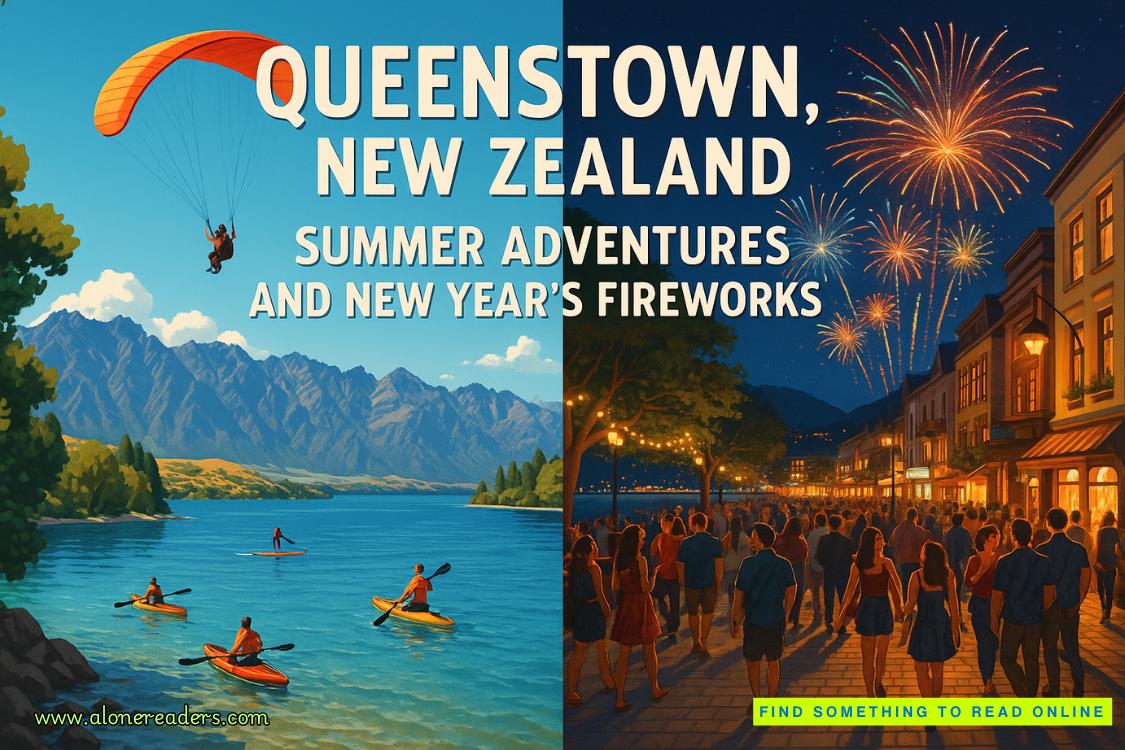Page 25 of The 6th Extinction (Sigma Force 10)
They all edged carefully across a landscape of greens, purples, and reds toward the swath of darkness. It looked like a shadow had fallen over the upper half of the hill. The demarcation line between the two areas appeared crisp from a distance, but as they reached the border, it was less well defined, a mix of healthy and dead flora.
Lisa directed her brother. “Josh, you collect a plant that looks healthy in this zone. I’ll bag up one of the charred-looking specimens.” She pointed to Drake. “Let’s get soil samples here, too.”
As everyone set off to obey, Jenna kept to Lisa’s side. Together they stepped into the shadowy fields and crouched beside a patch of tall, thin plants, each stalk crowned by black petals.
“Castilleja,” Jenna said. “Desert paintbrush. Sometimes called prairie-fire because of its bright red flowers. They’re just beginning to bloom this time of year.”
She pointed to a healthy spread of paintbrush along the lower slopes, where the flowers budded in shades of crimson.
Lisa grabbed the base of one of the diseased plants and tugged it free of the soil, roots and all. But as she tried to fold it into a large plastic specimen bag, the stalk and leaves crumbled apart, like a sculpture made of sand.
Jenna helped hold open the bag to catch the detritus as it fell away. Once done, they both stood. Lisa gazed toward the summit of the hill.
“Let’s go look,” Jenna said, wanting to know the extent of the damage.
Placing each boot with great care, they scaled the slope to the ridgeline. Jenna gasped as the view opened up ahead. For as far as she could see, black hills spread outward, and a perfect stillness blanketed the area.
Off in the distance, a chain-link fence cut across the dead hills, marking the official border of the research station.
“Could that toxic cloud have caused this die-off?” Jenna asked. “Was the gas somehow extra deadly this close to the base?”
“Maybe, but I doubt it.”
Jenna heard the fear in her voice and knew what troubled her.
Was this a sign that something had escaped the base? Jenna stared around her. Worst of all, could it still be active?
Lisa retreated from the sight, drawing Jenna with her. “Let’s continue to ground zero. Search for any evidence and get back to the staging area with our specimens. Then maybe we’ll have some answers.”
Returning to the edge of the dark field, they found Drake and his fellow Marine pounding in a row of wooden stakes along the margin, delineating the border. To the side, Josh stood with all of the team’s samples—both soil and plants—collected in a box.
Together they returned to the Hummer, climbed back into the bed, and continued their journey toward the blasted heart of the hot zone.
Jenna gaped at the destruction around them, noting the corpse of a coyote in a ditch, its fur mostly gone, its body as blackened as the fields.
She stared in the direction of the base.
What horror did you create, Dr. Hess?
6:43 A.M. PDT
Baja California, Mexico
Kendall Hess stood alongside the small prop plane as it was being refueled. He’d been allowed to stretch his legs. His towering guard Mateo passed a stack of hundred-dollar bills wrapped with a rubber band to a local man, his eyes wary under the brim of a cowboy hat.
Likely a drug smuggler, Kendall imagined. The unmarked airstrip and the lone refueling truck added weight to this deduction.
After the events in the mountains, Kendall had done his best to track their route south. Mateo had abandoned the helicopter in the Nevada desert and switched to a private plane at a small airfield. He changed again to this Cessna in Arizona and used it to cross the border just before sunrise. Since then, they had been traveling along the Baja peninsula. He guessed they were somewhere south of the city of San Felipe.
In the distance, the Sea of Cortez shone brightly, an azure brilliance against the rolling dunes of the surrounding desert. It was a harsh, empty landscape, spiked by a few cacti.
He recognized the tall, spiny plants. Pachycereus pringlei, called elephant cacti for their sheer size. This particular species had garnered his scientific attention because of its ability to survive in such hostile lands. It grew to well over ten meters and was capable of living for over a thousand years, often on soil that was little more than rock. It accomplished that through a symbiotic relationship with a unique bacterium. The microorganism helped break down stone and fix nitrogen for the plant. The relationship was so successful that the cactus packed the bacteria into its own seeds.
Kendall had briefly studied that microbe as part of his research into extremophiles, but it proved to be a dead end.
Let’s hope the same can’t be said for me.
“Back in,” Mateo ordered gruffly.
Knowing he had no choice, Kendall ducked under the wing and climbed into the cabin, shadowed by the bulk of his guard. The aircraft’s pilot was the same man who had flown them from California. As soon as Kendall was seated, the Cessna began rolling along the runway, then lifted off and aimed south yet again.
Where are they taking me?
He didn’t know the answer to that, but he knew who waited for him at the other end. It was the same man who had orchestrated the attack, and who likely had been manipulating Kendall’s research from afar for the past decade.
The bastard—once a colleague—had been declared dead eleven years ago. His plane had crashed in the Congo, and a week later, searchers found the wreckage, along with the charred remains of what appeared to be the flight crew and passengers. Kendall now knew that was a lie, a fabrication, but at the time, he had been secretly relieved to hear about the man’s death, fearful of the dark path he had been following.
If he’s still pursuing that line of research . . .
Kendall trembled with dread, knowing what he had created in his own lab, what had been unleashed in California. With a shudder, he could guess why he had been kidnapped.
God help us all.
6:46 A.M. PDT
Painter leaned closer to the monitor, shadowed by the base commander, Colonel Bozeman. The computer screen was broken up into five sections, the video feed coming from the various members of the expeditionary team. Through their cameras, he studied the blasted landscape as the truck approached the security fence around the former base.
“Don’t get too close to the actual station,” he radioed, warning the team. “Most of that base is buried underground. Who knows what’s left of its structural integrity after that blast? The mass of the truck—even your own body weight—could trigger a collapse. We don’t want you all accidentally dropping into a toxic sinkhole.”















